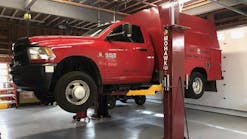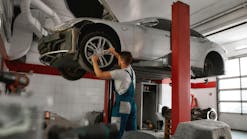2020 is upon us for most shops, that means it’s time to look ahead and start creating marketing strategies for the new year. Trust me, I know it can be daunting. There are literally hundreds of marketing options out there to choose from. It’s enough to make a shop owner’s head spin.
Fear not, because I am here to present you with 10 winning marketing strategies that should help build your business over the course of the next year.
While I understand that you may not be able to implement all of these strategies, applying just a few could make a big difference in driving sales and business growth in 2020.
1. Identify your problems
This one is a freebie. It doesn’t cost you a thing to take a good, long, honest look inward to see where your marketing and business goals are falling short. One of the most important aspects of any successful marketing campaign is a true understanding of your own business or shop. Embrace the honest and brutal facts of reality.
When we work with new clients, one of the first things we do is take a look at what we call their “revenue bucket.” It’s a simple concept, but it goes a long way in determining the direction and goals of your marketing plan.
Think of your shop as a bucket that you’re constantly trying to keep full. Your regular customers keep your bucket at least partially filled, while new customers add to the flow. However, like many shops, you’re likely losing a certain percentage of customers over time, which means your bucket has a leak. Even with great customer flow at the top, if you’re not retaining customers long-term, you’re going to have to work twice as hard to attract new customers to balance out those that are leaving.
Looking at this simple example, we can identify where shops really need to focus their marketing. Too often, shop owners concentrate solely on luring new customers. They don’t know how many customers are leaving because they aren’t looking at the whole picture. If your shop is having difficulty retaining customers, you should develop a marketing plan specifically aimed at plugging the holes and growing your business.
2. Develop a true omni-channel strategy
One of the key components to a successful marketing strategy is consistency. It doesn’t matter how many platforms or tools you use, if you aren’t consistent in your overall marketing approach, you will likely only succeed in confusing your existing customer base and potential prospects.
There is a massive difference between having a multi-channel approach and a true omni-channel strategy. You may already be using various platforms — from social media to direct mail — to reach current and potential customers. But ask yourself this, “is your messaging the same across all of those platforms?” If your logo was hidden from your marketing collateral, would everyone in your market know that all marketing creatives were for the same company? Or are you saying different things across different platforms? If you aren’t consistent in your verbiage, messaging, and visuals in every part of your marketing outreach, you can actually end up damaging your overall strategy.
Think of it like a band. A multi-channel approach is a collection of instruments, each instrument playing its own song. A true omni-channel strategy takes all of those instruments and gets them playing the same song together. One is a cacophony of sound, the other is a beautiful piece of art.
Again, this particular strategy shouldn’t involve a lot of cost, since your biggest commitment is to decide on a message, a look, and specific offers to carry across all of your marketing efforts. It will also save your budget by not having to pay graphic designers and writers to create a number of different messages and visuals.
3. Incorporate direct mail
This is one of the most cost-effective and proven marketing tactics any shop owner can invest in. Yes, it may seem a bit old school, but some tools stick around for a reason - because they work. Simply put, direct mail has a long history of attracting new customers affordably. For those of you who haven’t used direct mail in the past, it’s a simple strategy that generally focuses on households within a specific area around the shop. The messaging is created, visuals are added and within a short time, thousands of potential customers are looking at your special offer.
4. Target customers with a rifle, not a shotgun
Now we are getting into some of the high-tech alternatives that may cost a bit more but have an incredible return on investment.
Targeted Direct Mail works primarily like a basic direct mail campaign, with one significant difference. Instead of simply targeting by zip code or carrier route, targeted direct mail involves analyzing your current customer list and compiling demographic information from that list to get a picture of your typical customer. Based on age, income, family size, occupation, and more, you can target households with similar customer profiles to send your campaigns to. The direct mail piece itself doesn’t change, just the households that receive it. Because the households receiving your direct mail are more targeted, for example based on specific car owners you want to reach, or data taken from your current customer list, your success rate will jump from around 1 percent with basic direct mail, to over 5 to 8 percent with targeted direct mail.
5. Reach them where they work, live and play
Geofencing is similar to targeted direct mail in that it draws information from your current customer database to determine which households to target. For our customers, we then take it a few steps further. Just as we do with targeted direct mail, we also take into consideration your objective with the marketing effort. Are you trying to attract new customers? Are you trying to win back old customers that have left? Are you trying to retain the ones you already have?
You can use this information to identify the best households with the highest propensity to respond to your campaign and create a geofence around those potential customers. These households are served mobile ads (in app) with the same messaging and visuals they would have received via direct mail pieces. You can use this same tactic to serve impressions to certain businesses or shopping areas around your shop too.
The great advantage of this strategy is that it reaches your potential customers where they live, work, and play. By combining the technical geofencing tool with the targeted direct mail tool, your return rate jumps significantly, creating over 20 percent lift in some cases. Because you can include local business and recreational areas in your geofenced area, you can truly reach a larger number of potential customers who may not live in your immediate area, but would likely use your services because they either work or play near your shop.
6. Get them to respond immediately
You can take the geofencing one step further by incorporating mobile click-through ads and banner ads as part of the strategy. When an individual who falls within your geofenced area that also fits your target demographic sees one of your in-app banners, they will get a call to action, just like on all of your other direct mail pieces. With Mail2Mobile click-through, however, the customer can immediately take advantage of your offer simply by clicking on the banner. This allows your potential customer to immediately respond to your offer in their moment of impulse, once again increasing your return rate.
What makes this particular tool attractive is that it allows shop owners to choose exactly where the click-through takes the customer. The customer can be redirected to the shop website, a contact page, an appointment registration page, basically anywhere the shop owner wants to direct the customer. Once that customer has been directed where the shop owner wants, the shop is able to collect valuable data on the customer. This allows the shop to use that information for later marketing and outreach efforts.
7. Keep your website clean, make it visible
Speaking of your website, I can’t stress enough how important it is to keep your website updated, and easily accessible. Many shops spend money to create a website, and then often never do anything else with it. In order for your website to be a true asset to your marketing efforts it has to be accessible. This means being visible on as many search engines as possible through SEO efforts. Everyone knows about Google, Facebook and Yelp, but it may surprise you that there are over 70 listings platforms where your site could be registered. The more that you are on, the higher the likelihood you will be found. In addition, it’s imperative your local listings are accurate and properly portray your shop.
It’s also important to ensure your website functions easily on mobile phones, tablets, and laptops. This doesn’t cost much and will prove invaluable in increasing the visibility of both your website and the success of your shop.
8. Get reviewed!
Word of mouth is still one of the most vital forms of marketing for all businesses, not just automotive shops. One way you can help make your shop more visible is to get reviewed on Google, Yelp, and the like. The more positive reviews your shop gets, the more favorable your shop will be viewed by potential customers looking for a place to take their car. Remind employees to always ask customers to review the shop during face-to- face interactions and follow-up with email review requests.
You can also incentivize reviews. By simply offering your customers a discount on a particular service or a free item for their car, you can begin to generate more reviews and raise the profile of your shop. One key here is to avoid mandating that they leave a 5-star rating to get the incentive – it must remain up to them to form their own opinion and independently review your shop based on their experience.
Too often shop owners are afraid to push for customer reviews for fear of negative feedback. Negative reviews don’t need to be damaging; in fact, they can actually work in your favor. First, continue to read the reviews. If you see a negative comment, take immediate action. Reach out to the customer and address the issue directly. Others will see your response and realize that you are genuine and don’t want to leave anyone with a poor experience. Don’t get argumentative when responding to a negative review – keep it vanilla and provide an email address or phone number to access further assistance resolving their issue.
9. Social media for all
Social media should not be looked at solely as a lead generation tool for your shop. Not every posting on Facebook, Twitter, Instagram, and other social media sites directly drive customers through your doors. It happens, but it’s not the basis for a successful social strategy.
However, social media is fantastic for creating an image for your shop. You can use social media channels to post about your community involvement, customer testimonials, items of interest about your shop and employees, even special offers. Everything you do on your social media platforms helps build an image of your shop that will eventually be noticed by potential customers, as well as current customers. It’s OK to post on occasion about a special you are running but being overly promotional on social is not a good idea.
Social media is also an excellent way to promote interaction with your current customers. By involving them on your social media platforms, you basically recruit them to help spread your marketing efforts to a much wider circle.
10. Say thank you
We all know it’s cheaper to keep an existing customer than to acquire a new one, so why not allocate a small portion of your marketing budget to keeping current customers happy? To do this, there’s not much that works better than rebate checks or gift cards. Think of these tools as a kind of “thank you” to your current customers.
The concept is simple. These are reward-based tools that are based on the dollar amount different customers spend at your shop. The more they spend within a given year, the higher the rebate check or gift card will be. These items go to current customers to keep them coming back to your shop. It may seem simple, but this tactic can do wonders to retain customers and keep them loyal.


